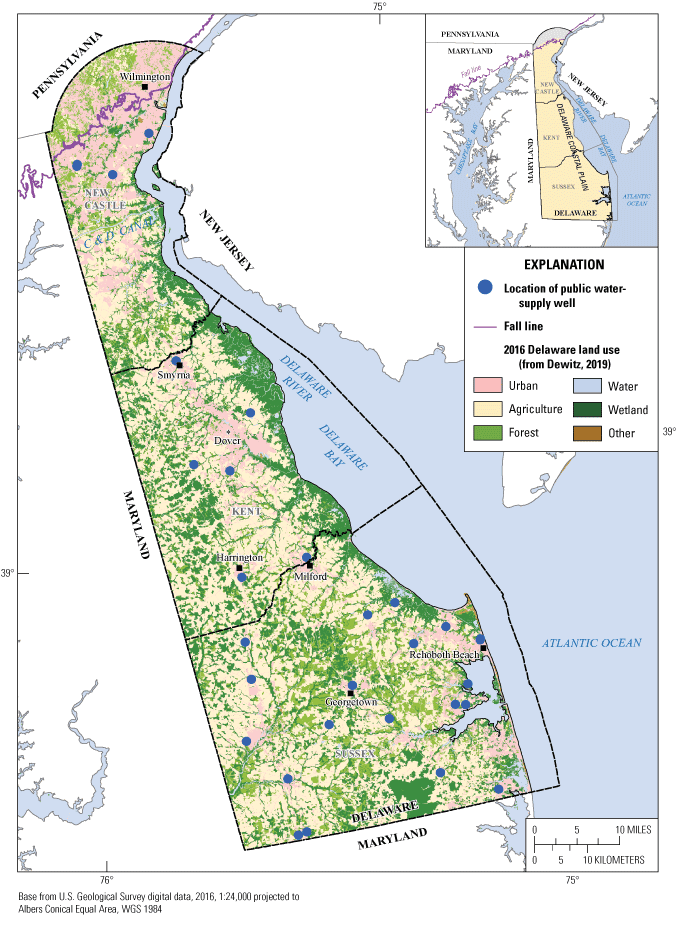'Elevated' PFAS levels found in 2 Wicomico mobile home parks' water
A second phase of Maryland Department of the Environment test results have found elevated, but not "enforceable" PFAS levels in two regional water systems.
PFAS, or per- and polyfluoroalkyl substances, refers to thousands of human-made chemicals that have been used since the 1940s in a range of products that can cause severe health issues in cases of long-term exposure in drinking water.
Water systems at Gateway Village Mobile Home Park in Delmar and Naylor Mill Mobile Home Park in Salisbury were among the locations in Wicomico County highlighted in the Phase 2 Public Water System Study in State Drinking Water Sources released in April.
“Maryland is committed to reducing the risks of PFAS chemicals in our state and continuing our close coordination with scientific, local, state and federal partners,” said Ben Grumbles, former Maryland Environment Secretary prior to stepping down. “Our ongoing sampling for PFAS in public drinking water systems is a big part of our comprehensive approach to understanding and communicating risks.”
More on PFAS issues in Delaware: 'Forever chemicals' found in well water across Delaware, report finds
More on a drinking water database: Database puts focus on drinking water safety
Naylor Mill had a reading of 36.92 parts per trillion in a sample taken April 14, 2021, with a follow-up reading of 35.73 parts per trillion taken May 12, 2021.
Gateway Mobile had a reading of 28.20 parts per trillion April 29, 2021, with another of 27.49 parts per trillion May 12, 2021.
According to the report on specific community water systems:
Samples that exceed 28 parts per trillion of the contaminants means encouraged yearly monitoring with the results to be reported to the department.
Samples that exceed 35 parts per trillion of the contaminants means conducting semi-annual monitoring at the impacted water treatment plant and conducting yearly sampling at other points of entry.
Finally, samples exceeding 70 parts per trillion requires issuing a Tier II Public Notification, taking the impacted water treatment plant offline, exploring treatment options or acquiring alternate water sources, and conduct quarterly monitoring.
"The risk posed by exposure to PFAS is an emerging and evolving national concern. MDE has initiated a multipronged, risk-based, scientific approach to understand and communicate the risks associated with PFAS exposure and to reduce unacceptable risks," the department said in statement.
It also noted an integral part of treating elevated PFAS levels is better understanding the occurrence of them in public drinking water supplies.
After identifying locations with the highest potential relative risk of the the contaminants, the department began the first phase in September 2020 with public water system sampling.
Eliminating PFAS

Statewide, efforts to contain the contaminants have led many organizations to underscore their health risks.
"The Chesapeake Bay Foundation continues to follow the science of emerging chemicals like PFAS realizing its widespread use," said Doug Myers, Maryland senior scientist for the organization. "PFAS health effects in both humans and other animals include reproductive, developmental, endocrine and cardiovascular diseases. US Geologic Survey scientists have discovered PFAS in fish tissues throughout the bay."
In testimony to the Maryland General Assembly to ban the use of the contaminants altogether, the Chesapeake Physicians for Social Responsibility noted the severe health problems they can cause.
Among them are maladies with the immune system, higher rates of cancer, and developmental issues in fetuses and newborns.
What are PFAS?: A guide to understanding chemicals behind nonstick pans, cancer fears
"It is a step in the right direction to address PFAS as a class of chemicals, rather than individually, as there are thousands of compounds in this class and their collective impact from exposure in-utero to adulthood likely causes the greatest harm," the organization said.
The Maryland Public Health Association echoed those sentiments adding it is the duty of the state to combat PFAS contamination wherever it is found.
According to the Maryland Department of the Environment, an estimated 75% of all the drinking water in the state has some levels of PFAS.
"One of the strongest interventions we can take to prevent environmentally caused diseases like cancer are preventing or eliminating exposures to contaminants," said the public health organization. "Ten states have already taken strong action to stop using PFAS in food packaging, rugs and carpets, or firefighting foam. It is time for Maryland to join them."
Sampling for the third phase of sampling public water systems began in August 2021 and is expected to continue through late spring 2022.
The department will address any elevated PFAS levels that are detected, and produce a report on these results as well.
This article originally appeared on Salisbury Daily Times: Drinking water safety: Elevated PFAS levels found at 2 Wicomico sites

